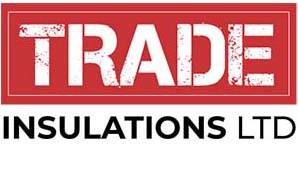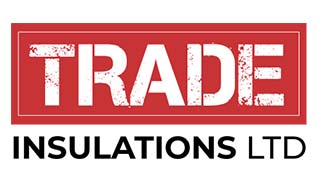Guide to PIR Boards
PIR Insulation Boards are the most popular and well-known type of insulation and a great alternative to fibreglass batt insulation. These boards are extremely popular as the PIR insulation boards don't sag or become flimsy over time, which ensures a long-lasting product and excellent performance. PIR insulation boards are also known for their fire resistance, as they have a high ignition point and do not release toxic gases when they burn, making them a safer insulation option for buildings. This can give peace of mind to builders, homeowners and tenants of the building. They can help meet fire safety building codes and regulations.
Another advantage of PIR insulation boards is that they can help to reduce noise transmission, which can be especially beneficial in commercial and industrial settings. This can improve the overall acoustic comfort of the building and make it more pleasant for occupants.
PIR insulation boards are a versatile and efficient insulation option for various construction projects. With high thermal insulation properties, fire resistance, low water absorption rate, and being environmentally friendly, PIR insulation boards are a great choice for any building looking to improve energy efficiency, fire safety, and durability. They are also cost-effective, easy to work with, and easy to install.
PIR Insulation Board Types:
- Standard Insulation Board
- Cavity Wall Board
- Pitched Roof Board
- External Wall Board
- Soffit Board
What are PIR Insulation Boards:
PIR insulation boards (polyisocyanurate insulation boards) are a type of insulation material that are made from polyisocyanurate foam, a type of plastic that is known for its insulation properties. The lightweight foam board is fixed in between two foil facings manufactured in sheet to ensure easy application and extra insulation for your home or commercial building. Insulation boards are an essential part of any domestic or commercial building construction project.
They are typically used in commercial and residential buildings, as well as in industrial settings to improve the energy efficiency and thermal insulation of the building. They are also environmentally friendly and can be recycled at the end of their useful life.
PIR insulation boards are typically available in different thicknesses and sizes, making them suitable for use in a wide range of construction projects. They are also easy to install, and can be done by a skilled DIYer or professional contractor. They can be used in walls, roofs, and floors, and they can be used in conjunction with other types of insulation materials to provide an even greater level of insulation.
One of the main benefits of PIR insulation boards is their high thermal insulation properties, which means that they can keep heat inside a building for longer periods of time and can help to reduce energy costs, as well as improve the overall comfort of a building. They also have a low water absorption rate, which means that they will not absorb moisture and become mouldy over time.
Cheap PIR insulation boards
Cheap PIR insulation boards are an excellent choice for those looking to insulate their home or building without breaking the bank. They offer the same high-quality insulation properties at a more affordable price point.
We boast our very best prices on PIR insulation boards. We believe in stocking top brands at trade prices. This includes PIR boards.
PIR boards are made using a blend of materials together to create a single board of rigid foam insulation. The way these boards work involve heat being generated which causes a release of gases which are then trapped within cells creating a high thermal performance. The foam board is then placed in between two foil facings
One of the main advantages of cheap PIR insulation boards is their cost-effectiveness. They offer a cost-efficient way to improve the energy efficiency of a home or building, which can result in significant savings on energy bills in the long run. They are also an affordable option for those looking to retrofit an existing building, as they can be easily installed in tight spaces and hard-to-reach areas.
Cheap PIR insulation boards are also very durable and long-lasting. They are made from high-quality materials that can withstand the test of time, ensuring they will provide insulation for many years to come. They are also resistant to moisture and fire, making them an ideal choice for any building.
PIR boards (polyisocyanurate insulation) include:
- Structural rigidity
- Simple Installation
- Moisture Resistant
- Protects/ stops mould/ condensation – this can affect the quality of the board
- Great lifespan
- Fire-resistant Properties – cannot melt within fire.
Furthermore, Cheap PIR insulation boards are environmentally friendly. They are made from a renewable resource and do not contain any harmful chemicals, making them a sustainable insulation option. They can also be recycled at the end of their useful life, making them a responsible choice for the environment.
Popular PIR insulation boards:
Celotex PIR insulation boards
Offers several different types of insulation board in a wide range of sizes. Celotex Boards can be used in homes or commercial buildings to improve the building insulation and save energy and heating costs. Celotex has a range that has a product designed for every need from general use to cavity wallboards, floorboards, or fire resistance. The Celotex brand has years of experience, and their range of insulation boards are continuously developing.
Kingspan insulation board
Kingspan is one of the most popular and well-known brands when it comes to insulation materials. Kingspan provides several different types of insulation boards in a wide range of sizes which can be used in pitched roofs, external walls, internal walls, flat roofs, floors and balconies. Kingspan boards can be used in homes or commercial buildings to improve building insulation and save energy and heating costs. Key products Kooltherm and thermaline.
How to install Celotex PIR insulation boards:
There is a variety of options when it comes to installing insulation boards, each method differs depending on the product being installed and the location it is being fitted. PIR Insulation Boards can be installed in between rafters in pitched roofs, to ceilings in flat roofs, cavity walls, floors and more. When purchasing PIR Insulation Boards, each product should be provided with an installation guide detailing how the product should be fit. This can also be found within our product descriptions.
This product can be cut with a hand saw. It is important to use protective clothing such as goggles or safety glasses as when cutting Insulation Boards as dust and particles are produced.
The most commonly used form of PIR is that which is sandwiched between two high-performance aluminium foil facings. This helps to create a durable, light, and tough insulation board that delivers high performance while also reducing costs and helps to save energy.
There are other forms of Celotex PIR insulation boards available such as those that are designed for flat roofs that have plywood on one side and then plasterboard or glass tissue on the other side. This is then used in wall applications.
This form of insulation provides exceptional longevity and that is because of the way it is designed as well as its compressed strength. Furthermore, they also need around half the thickness of traditional insulation solutions to deliver the same level of performance. This means that they can deliver low R-values which can be as low as 0.021W/mK. As a result, it is now considered one of the most popular and most effective insulation solutions that can help to save energy. These boards are built to last and this means that they will not sag, rot or decay. This means that they will stand the test of time and will continue to deliver exceptional levels of insulation throughout the lifetime of the property.
Along with this, the insulation core, as well as the facings, will not succumb to mold or bacteria growth. The core is fibre-free which means that it won’t irritate while it is a material that is environmentally friendly. What’s more, it is also lightweight which makes it suitable for modern construction methods and structures that are lightweight. An additional benefit is that they are easy to transport and handle, which makes the installation process faster and more efficient.
This form of insulation is extremely flexible and versatile which means that it can be used in a number of settings. They are perfect for use in pitched or flat roofs and make for an excellent alternative to the insulation that is provided in rolls and can irritate.
They can also be installed in walls and floors providing an effective insulation solution throughout properties while they can also be installed in cavities.
As they are suitable for a variety of applications and come with a wealth of benefits, that is the perfect option for many different projects.
Which 100mm PIR Board has the best thermal conductivity?
At Trade Insulations Ltd we wanted to see what our clients thought…. which brand 100mm PIR Insulation Boards has the best thermal conductivity?. We asked our marketing team to put a vote together to see what our clients thought. Over 2500 of our clients come back to us and these are the results…
To make it a fair test we waited 2 weeks before uploading the results –
Kingspan – 28%
Celotex – 20%
Recticel – 16%
Ecotherm – 14%
Quinn Therm – 7%
Xtratherm – 6%
IKO – 5%
Ballytherm – 4%
And the Answer is…
All of the Above hold the same thermal conductivity on 100mm Insulation Board of 0.022W/mK. Contrary to popular belief all of these brands work towards the industry standard of 0.022W/km. So, no matter the PIR insulation brand either Celotex, Recticel, or Kingspan they all do the same job.
We sell all sizes on our insulation boards –
| 25mm PIR Board / 25mm Insulation Board |
| 30mm PIR Board / 30mm Insulation Board |
| 40mm PIR Board / 40mm Insulation Board |
| 50mm PIR Board / 50mm Insulation Board |
| 60mm PIR Board / 60mm Insulation Board |
| 70mm PIR Board / 70mm Insulation Board |
| 75mm PIR Board / 75mm Insulation Board |
| 80mm PIR Board / 80mm Insulation Board |
| 90mm PIR Board / 90mm Insulation Board |
| 100mm PIR Board / 100mm Insulation Board |
| 110mm PIR Board / 110mm Insulation Board |
| 120mm PIR Board / 120mm Insulation Board |
| 130mm PIR Board / 130mm Insulation Board |
| 140mm PIR Board / 140mm Insulation Board |
| 150mm PIR Board / 150mm Insulation Board |
| 165mm PIR Board / 165mm Insulation Board |
| 200mm PIR Board / 200mm Insulation Board |
PIR insulation Brands & Codes
Please see below for each PIR brand & the codes you need to look out for.
Kingspan Insulation Boards – Known as Kingspan Thermapitch TP10 Insulation Board 2400×1200. They also do Thermafloor TF70 & Thermawall TW55
Celotex Insulation Boards – Celotex 25mm TB4025 / Celotex 30mm TB4030 / Celotex 40mm TB4040 / Celotex 50mm GA4050 / Celotex 60mm GA4060 / Celotex 70mm GA4070 / Celotex 75mm GA4075 / Celotex 80mm GA4080 / Celotex 90mm GA4090 / Celotex 100mm GA4100 / Celotex 110mm XR4110 / Celotex 120mm XR4120 / Celotex 130mm XR4130 / Celotex 140mm XR4140 / Celotex 150mm XR4150 / Celotex 165mm XR4165 / Celotex 200mm XR4200 / all boards are 2400×1200
Recticel Insulation Boards – Known as Recticel Eurothane GP PIR Rigid Insulation Board – all boards are 2400×1200
Ecotherm Insulation Boards – Known as Ecotherm Eco-Versal General Purpose Insulation Board – all boards 2400×1200
Quinn Therm Insulation Boards – Known as Quinn Therm QF PIR Insulation Board – all boards 2400×1200
Xtratherm Insulation Boards – Known as Xtratherm Thin-R Insulation Board – all boards 2400×1200
IKO Insulation Boards – Known as IKO Enertherm ALU Universal Rigid Insulation Board – all boards 2400×1200
Ballytherm Insulation Boards – Known as Ballytherm Insulation General Purpose Board – all boards 2400×1200
PIR Insulation Boards (Multi-purpose) are one of the most used insulation materials on the market. Uses for domestic and commercial buildings while holding excellent thermal properties. PIR Boards are provided with a vapour barrier on both sides and have a very high fire safety value, It also has low global warming potential (GWP). The high-performing PIR boards are environmentally friendly and are designed to reduce energy bills and therefore reduce carbon footprint. In the summer months, it also reduces the need for air conditioning as it will keep the heat out. It is designed to eliminate cold spots and boasts outstanding performance when used in timber frames and masonry walls.
If you’re still uncertain about what insulation material is right for you, it’s always helpful to seek professional guidance. If that’s the case for you, our team at Trade Insulations is here to help. With many years of experience, we work to understand your specific requirements and find a materials solution that is right for you.
if you have specific questions or queries, you can contact us directly and learn more about different ranges, and talk through which option is right for your unique space.
Polyisocyanurate Boards FAQs
Below are some of the most frequently asked questions we get asked about PIR boards.
How to cut PIR insulation board?
There are many ways in which Polyisocyanurate insulation boards can be cut. The first step of any method is to use a tape measure to measure and then mark exactly what you want to cut. Once you know exactly what you want to cut, you can proceed to the actual cutting of the board. Thinner boards under 50mm in thickness can be cut using a utility knife. To do this, place a spirit level along your marked lines to ensure a straight line. Use a sharp utility knife against the line and firmly score the board. Once the board has been marked, you can apply pressure and the board should snap off perfectly to your marked line.
For thicker PIR boards (50mm and above), we advise using a saw. You can make the cut using either a jigsaw or a hand saw, however you are likely to get a better cut with a standard hand saw. When cutting with a handsaw we advise that you use a piece of wood along your marked line. This piece of wood can be used to keep close to your saw. Start the cut of the board at a 90 degree angle keeping the saw flat to the piece of wood. Ensure that you cut all the way through the board and use the wood to help guide the cut. Once complete, you will be left with a perfectly cut PIR board.
Below is a video detailing how to cut PIR insulation board using a standard handsaw


